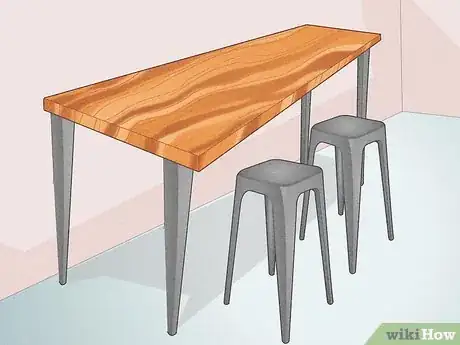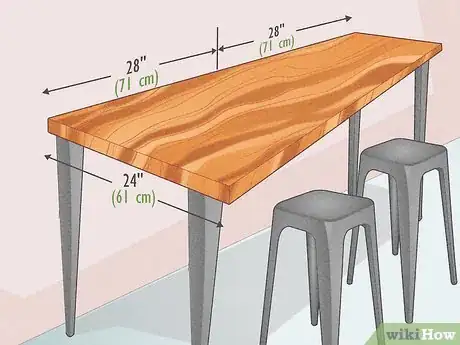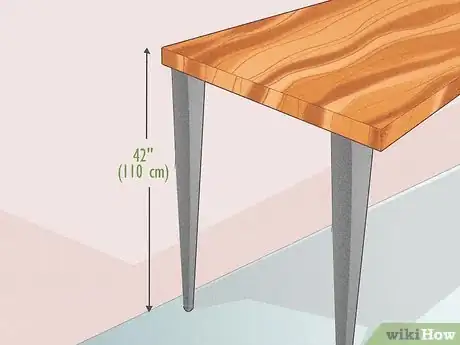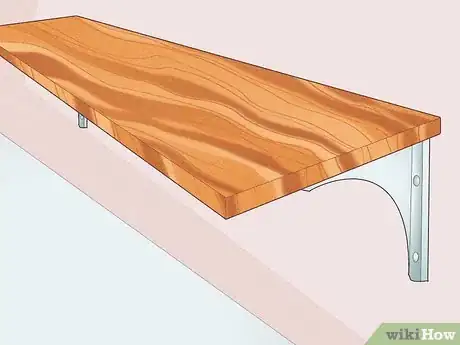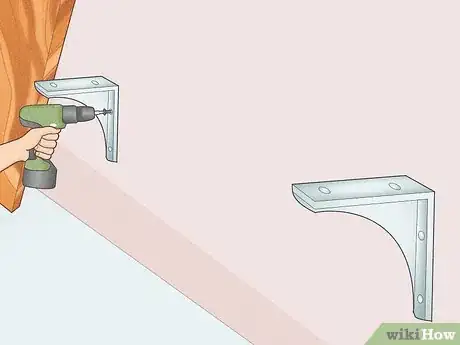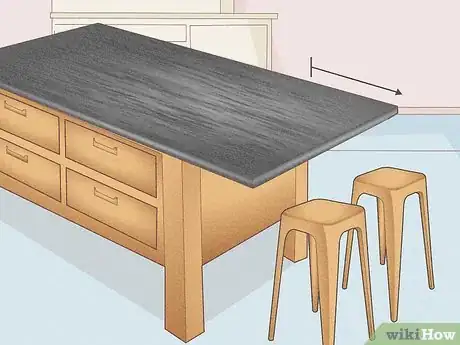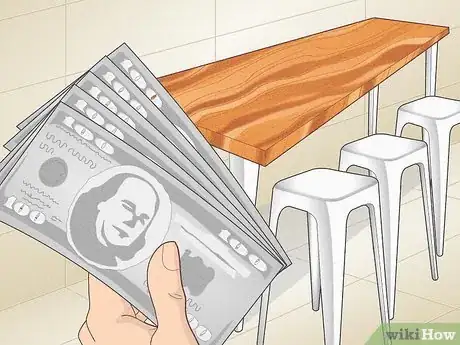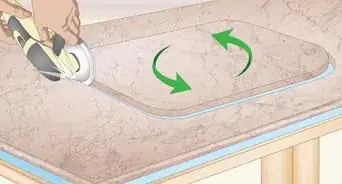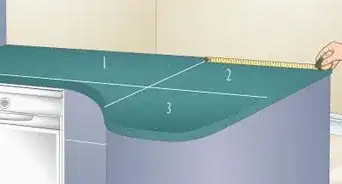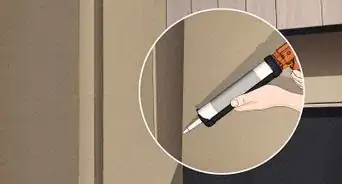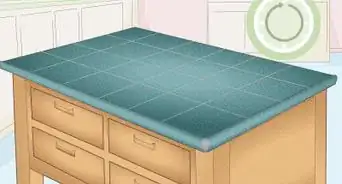This article was co-authored by Josh Goldenberg and by wikiHow staff writer, Christopher M. Osborne, PhD. Josh Goldenberg is a Residential Remodeling Expert and the Co-Founder of 5blox, based in the Greater Los Angeles area. With more than seven years of experience, Josh and his team specialize in luxurious and sustainable home renovations. 5blox is fully licensed and bonded.
This article has been viewed 9,036 times.
A breakfast bar is a great place to enjoy your morning coffee, give the kids an after-school snack, or serve wine and appetizers to your dinner party guests. If you’d like to add a breakfast bar but aren’t sure you have the space for one, fear not—with a bit of creativity, you can almost certainly nestle one in. Just be sure to follow some general guidelines for things like height, width, overhang, and walking clearance so your breakfast bar remains a go-to spot in your home for years to come.
Steps
How do I extend a breakfast bar off my existing cabinetry?
-
1Install a new piece of countertop that overhangs the existing base. If you’re adding a breakfast bar to the end of your kitchen island, for instance, buy a new countertop for the island that creates an overhang of at least 12 in (30 cm) for the breakfast bar.
Quartz may be able to handle this overhang unsupported, but most countertop materials will need overhang support. Here’s a general preview of the process:[13]- Remove the old countertop, being careful not to damage the cabinetry.
- Measure, mark, and install support brackets into the cabinet structure. Alternatively, install “invisible” supports, which are flat metal rails that run under the entire countertop and cantilever out to support the overhang.
- Install the new countertop, using a combination of adhesive and screws.
-
2Make the bartop slightly higher if you don’t want to replace the whole countertop. Instead of having a breakfast bar that’s a seamless continuation of the countertop—which requires replacing that entire section of countertop—create a minor separation between the two elements.
Install the support brackets into the structure of the cabinetry so that they’ll hold the bartop slightly higher than the countertop—nearly equal to the thickness of the bartop, ideally.[14]
For example, if your wooden bartop is 1.75 in (4.4 cm) thick, set the brackets so they’ll hold the top surface of the bartop 1.5 in (3.8 cm) above the top surface of the adjoining countertop.
Instead of trying to match the existing countertop, choose a coordinating color or pattern in the same material, or a different material that complements the existing countertop.
References
- ↑ https://www.housebeautiful.com/uk/decorate/kitchen/a28841957/breakfast-bar-ideas/
- ↑ https://www.thisoldhouse.com/kitchens/21099262/how-to-build-a-breakfast-bar-in-your-kitchen
- ↑ Josh Goldenberg. Residential Remodeling Expert. Expert Interview. 25 January 2022.
- ↑ https://homedecorbliss.com/how-much-should-a-breakfast-bar-overhang/
- ↑ https://www.hgtv.com/design/remodel/kitchen-remodel/kitchen-island-with-stools
- ↑ https://www.thisoldhouse.com/kitchens/21099262/how-to-build-a-breakfast-bar-in-your-kitchen
- ↑ Josh Goldenberg. Residential Remodeling Expert. Expert Interview. 25 January 2022.
- ↑ https://homedecorbliss.com/how-much-should-a-breakfast-bar-overhang/
- ↑ https://www.housebeautiful.com/uk/decorate/kitchen/a28841957/breakfast-bar-ideas/
- ↑ https://www.solidsurfacedesigns.net/Blogs/Articles/Countertop-Overhangs
- ↑ https://www.thisoldhouse.com/kitchens/21099262/how-to-build-a-breakfast-bar-in-your-kitchen
- ↑ https://www.thisoldhouse.com/kitchens/21099262/how-to-build-a-breakfast-bar-in-your-kitchen
- ↑ https://www.thisoldhouse.com/kitchens/21099262/how-to-build-a-breakfast-bar-in-your-kitchen
- ↑ https://www.housebeautiful.com/uk/decorate/kitchen/a28841957/breakfast-bar-ideas/
